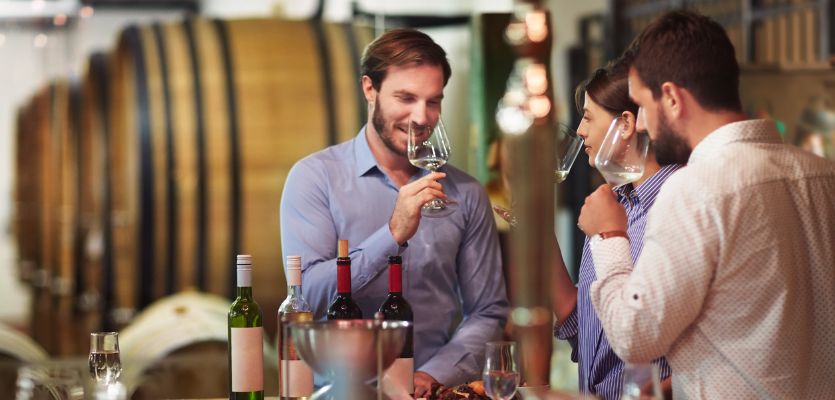Blind Wine Tasting: Can You Taste Price?
The debate around the blind wine tasting game to assess the quality and price of the beverage continues. There are some wine drinkers who claim that blind wine tasting has no scientific merits and there are others who say the exact opposite. There are countless blogs on blind wine tasting games, and the majority indicate that most wine drinkers cannot judge the quality or the price of the wine when blindfolded. The overall conclusion of these reports is that (for most people) blind tasting is as good as guessing.

WINE-TASTING TRAINING
All these are anecdotal reports, of course, and have not been performed under strict scientific criteria. Now, there is a recent study published in the Journal of Wine Economics and discussed at Forbes.com, titled “Does blind wine tasting work?” The study was conducted at Oxford University, England. The participants underwent five weeks of training so that they could identify the structural elements of the wine, like alcohol and acidic levels, which can help differentiate the wine flavors. At the same time, some participants did not undergo such intensive training.
The overall conclusion was that when trained wine experts (sommeliers) were used for blind wine tasting, they were more accurate in judging the pricing than people with no wine tasting training. The reason why sommeliers were more consistently accurate in the blind wine tasting game was that they had been trained to categorize specific wine flavors.
The researchers claimed that the intensive training enabled the sommeliers to activate regions of the brain involved in high-level cognitive processes, such as behavioral strategies and working memory. On the other hand, novices tasting wine activated areas of the brain associated with emotional processing and taste.
THE CONCLUSION
What the researchers observed was that “…blind tasting training can improve accuracy in terms of guesses as well as structural elements.” But they did not observe “…any improvements in accuracy or within-group agreement when it came to guesses of country or region.” Results of the analysis showed that accuracy was increased for older wines compared to younger wines, and that sweetness, acidity, and color (red wine) were preferred to white wines. And, yes, the study showed that wine preference was correlated to price, the higher the price, the more positive the response. On the other hand, participants with no training preferred wines that: had more alcohol content, were more acidic and had fewer oak flavors.
WHAT DOES THIS MEAN?
Blind wine tasting is of importance as it removes all bias that an individual may have against or for a particular wine. The playing field is leveled for all wines to be judged by the same analytical method. For example, pricing is a major bias when it comes to wines. Most novice wine drinkers believe that an expensive wine must taste great, and a less expensive wine must not be as good. The reality is that (again, for most people) many less expensive wines can taste just as great, or even better, than expensive wines.
The authors concluded that as more educated young people have started to drink wine, manufacturers should take note that they have a low preference for oak flavors; instead, they should consider marketing red wines with more structure and maturity to this demographic.
If all this sounds confusing, consider purchasing a less expensive wine first to see if you like it. If you would like more information about wines, call the staff who is passionate about wine at 1-503-863-5454 and/or visit them online at Pacific Rim and Company. If you are looking for some great tasting, affordable, wines, then consider the following:
- 2018 RAINSTORM PINOT NOIR
- 2022 J RIESLING
- 2018 RAMOS VINEYARD GEWURZTRAMINER
- 2016 HAHN HILL VINEYARD ICE WINE RIESLING